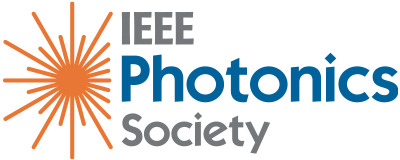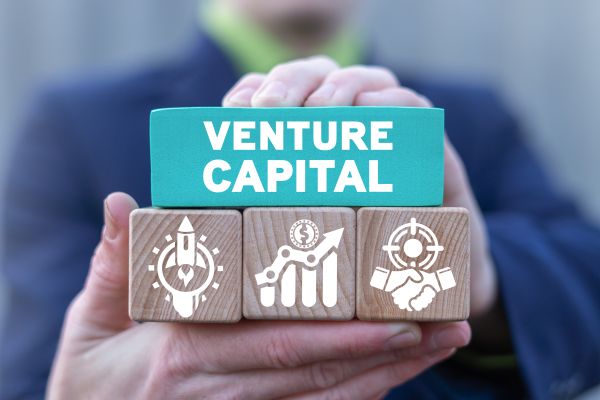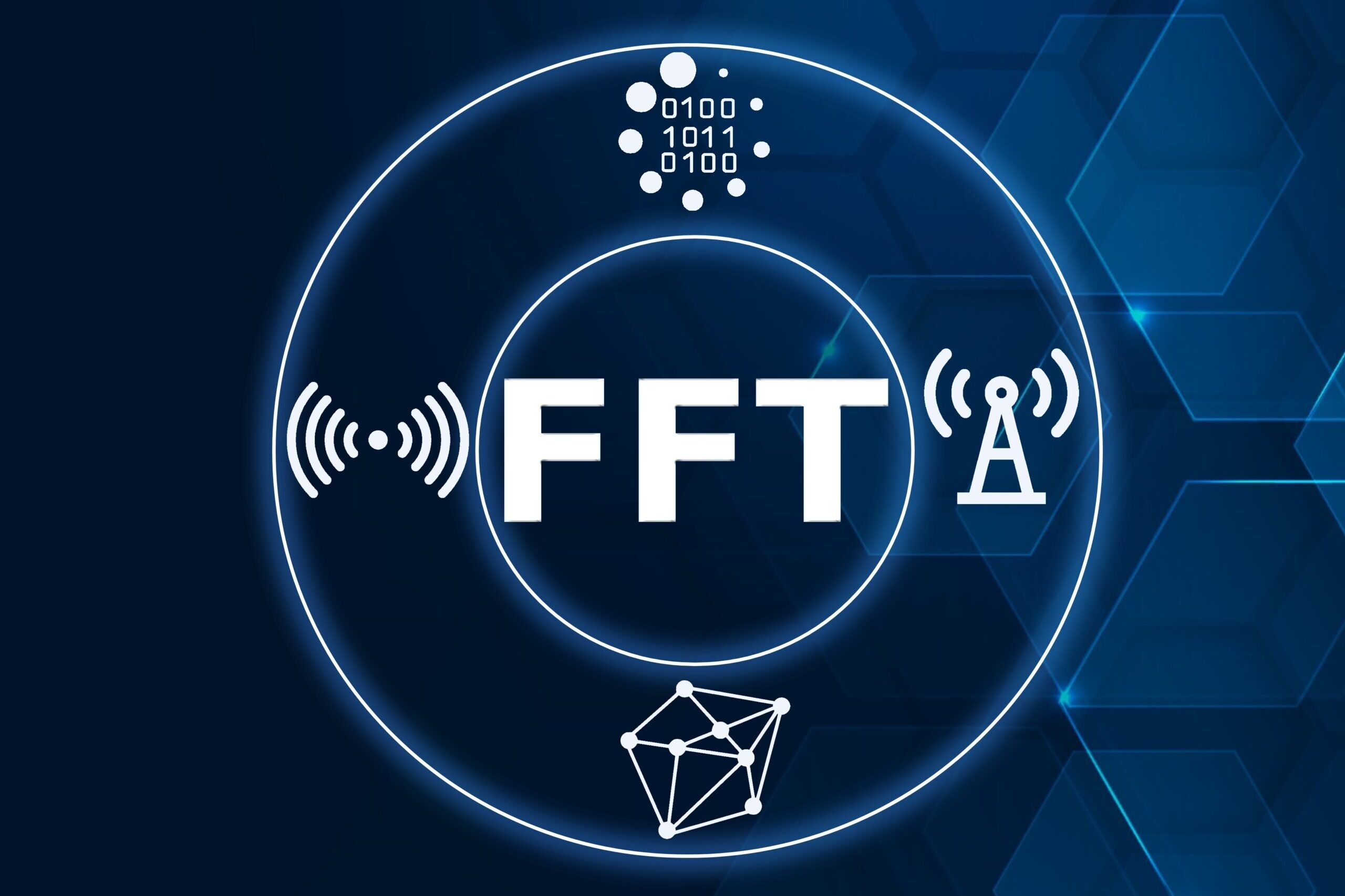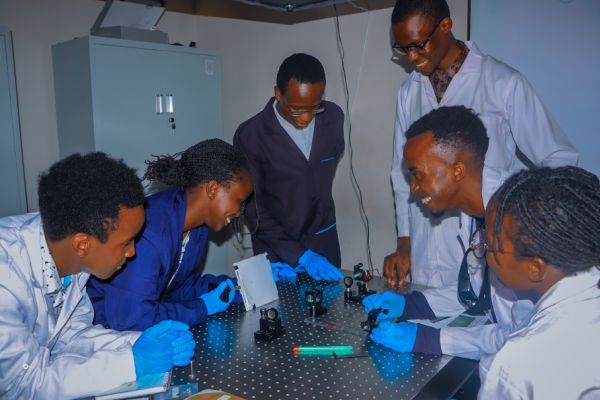By Cibby Pulikkaseril, Ph.D. Co-founder and CTO, Baraja

It’s the sixth year of co-founding my startup, Baraja, and as we prepare to roll out incredible photonic technologies for the next generation in high-performance LIDAR, I have to admit, sheepishly: I don’t know how I ended up here.
Young engineers have looked at my LinkedIn profile and concluded that I have crafted a perfectly tailored narrative for how I came to helm Baraja with my co-founder and co-conspirator, Federico. After all, it appears that I’ve taken a straight line: Bachelor’s in EE, one year at JDSU in Ottawa, Master’s in electrooptics, then a Ph.D. in heterodyne fiber optic systems. Then five years at an optical telecom company (Finisar) in Australia where I worked on the development of the WaveShaper and WaveAnalyzer products, leading to resigning a great job in photonics to form Baraja in my co-founder’s cold and miserably damp garage.
Well—I was lucky to have incredible mentors along the way that first pushed me into grad school, and then worked with me at Finisar to give me the hunger for making products, not just research. It was the excitement of bringing a real product to market that caught me like a virulent disease. We’d hack together a demo, take it to OFC to stick it under someone’s nose and attempt to pry a pre-order from them; we’d get interest, or maybe not, but it was an early introduction to attempting to find product-market fit.
Fed was the one who approached me about joining up to start a company, but I had already made my own plans – and they were truly terrible. I still have my original business plan, where my pitch to investors was, apparently: “give us $2M, and we’ll work on tech for three years and have no outcomes!” I had asked a few friends to join me in starting this business, but I couldn’t convince them, nor myself, really. When Fed showed me his pitch, I was electrified – he had clearly vocalized the market, the competition, and the specs to beat. On top of that, because there was no real market information about LIDAR sales, he took comparables from automotive sensors and electrification to generate a business model that was really, really exciting.
So—we were both in, and we made plans to leave. The real obstacle was money, of course. Where was it? Who has it? I knew vaguely about people called investors, and suspected that they wore monocles, but I had no idea how to get money.
I had two very young children, and Fed was expecting his first, so we were barely getting by. Who was going to back us?
Raising Money for Photonics It was going to be expensive to start Baraja and Fed and I were full-time, living off our meager savings while trying to figure out how we were going to pay for equipment and startup costs.
We started reaching out to friends around the world—old high school friends, classmates at college—and asked for $5000.
I was surprised how many people wanted to be a part of the venture—one friend, when I told him I was quitting my job, immediately blurted out, “Can I give you money?!?” I was taken aback; he had just had a kid, and I told him it was going to be really, really risky and he should keep his money. “I understand it’s risky. People like me never get into these deals, and that’s the opportunity. All I have is $5000, but you can have it,” he replied, eyes shining with hope.
Shocked, I agreed, and realized, for the first time, that I wasn’t begging for money—as my friend had adamantly declared—it was an opportunity. While we are still a private company, those earliest investors that backed us as friends have seen gargantuan returns on that original investment, so my friend was right to aggressively pursue the chance to back a friend.
This got us enough cash to start—we lodged a patent, bought some equipment. I started setting up some experiments to verify the ideas that we had, but I quickly reached a limit on my technical skills. We were going to need to hire a team.
We started talking to angel investors, but we didn’t really find the amount of money we were looking to fund a hardware startup; as well, it was clear that there was not an appreciation in the investor market for our incredibly difficult and technical journey. There was a boom in software startups, and compared to them, we looked unappetizing.
At this time, we heard two common refrains: “Move to the US,” and “It’s never gonna work!”
Moving to the US didn’t seem like an option – we both had very young kids, and even more impactful, our network of talented engineers was here in Sydney, and we would lose that edge by starting afresh in a new location. We had to raise money in Australia, and if not from angel investors, it was going to need to come from Venture Capitalists (VCs). In Australia, the VC sector had seen a long drought, and I was warned by several people about VCs and their anti-founder views, so I was extremely skeptical. Fed, on the other hand, was reading everything that the local VCs were putting out, and he really resonated with a relatively new fund, Blackbird Ventures, who had made their mark in their first fund by investing in some incredible software businesses. Would they invest in a hardware business that was going to need a lot of capital, blood and sweat?
There are many ways to get a meeting with a VC, and it is possible to send a cold email and attract their attention. It’s just not ideal—what do you do if they don’t reply? Keep trying? Maybe, but the best way to get in front of them would be through a warm intro: get someone from their network to recommend them to speak to you. It’s hard to figure out a cobweb of connections, but it is a great demonstration of your ability, as a founder, to hustle and make it happen.
Fed took yet another approach: he went to local startup events where he knew the Blackbird partners would be speaking, and then he would bull-rush them after they left the stage, elbow his way past all the other founders and speak to them face-to-face. Eventually, they relented and gave us a meeting.
We pitched them, and it was halfway exciting, but ultimately fell flat. We were so stressed about the technology and the risk, that it was not a compelling pitch. “If you had double the money,” they asked us, “could you go twice as fast?”
Ridiculous, we thought. After all, hardware is hard, and we have so many technical risks to solve. This was photonics at it’s hardest – could we take a concept for a LIDAR and actually prove it works in 6 months? After some deep soul searching, we came back with a revised plan that asked to raise more money from investors, grow the team larger than we thought, and accelerate the timeline. With that, we were in – and walked away with a term sheet with founder-friendly terms.
Money, Now What? Money always seems like the biggest obstacle when starting, but once you have it, the much-more terrifying future awaits… having to execute on your plan and deliver on the promises that you’ve made. In a photonic startup, this seems massively difficult, as you need to recruit new employees with specialized skills, working in nice, secure jobs. Why would they leave?
As new founders, we didn’t know what to do, so we recruited slowly. Our first employee was an optical engineer who was then working on crash-test dummies, so he was extremely eager to join Baraja. That was lucky for us; we were so protective about IP that we were uncomfortable to talk about anything regarding the technology or company plans. Other than that first employee, we quickly learned that the story and the tech was the secret to convincing great people to come work at Baraja for less money.
We started to trickle in employees, bringing in the core of skills that we needed to get to a demo: firmware, electronics, photonics. Those were exciting, blissful days, where we were all rowing in the same direction, and the excitement was thick like butter. The founders were racing around doing everything to keep the company chugging along—I took out the trash, did the purchasing, ran downstairs to collect the parcels. Anything that I could do that would keep the team moving, I did that.
There was no need for real meetings, since we were a small team and could discuss things by turning around in the same room. As the team grew, though, it became harder to communicate across different issues, and we were falling out of sync. The second we grew into two separate rooms, it was instantly more difficult to keep everyone up-to-date on the rapidly changing plans and discoveries. At that time, I started a weekly whiteboard session called “The Grind,” where I would go up and sketch out the system we were making, component-by-component, asking the audience to guide me in drawing the electrical and optical flow. As we continued to grow, this was a natural onboarding for employees, as they saw that anyone could ask “stupid” questions of the CTO, and these would often dive into unusually rich discussions about the nature of light.
We reached a terrifying point in that first year—our system could steer the beam really well, exactly like we predicted, but the real challenge in making a LIDAR system is to detect the unbelievably tiny amount of light that comes back from a diffuse target. After several iterations of receiver concepts, I realized that the system just was not practical, and would never scale to manufacturing. We made the difficult decision to pivot our approach and radically rethink the system, enabling us to retain a large optical aperture to collect photons.
It worked, and we put all our effort into accelerating to make our first prototype, bringing together every engineer and outside consultants to bring the concept to fruition, even getting a nice finish on the housing to make it look slick.
While it worked, it didn’t work very well…. So, we pivoted to our second prototype, which we modelled, built and tested in a month. I don’t remember that time, but we ended the year with a big celebration, inviting our friends and investors to come and see the demo in an auditorium. We were delirious with joy—we finally were a real LIDAR company because we had a working LIDAR! We put the sensor output on the big screen, and the team oohed and ahhhed over the details that they saw on the LIDAR point cloud.
At a lull in the raucous celebration, one of the investors piped up: “Is that what it’s supposed to look like? It just looks like a mess—to be honest, I’d drive straight through that.” Sobering feedback.
Five Years Later Five years later, Baraja continues to be one of the leaders in the automotive LIDAR space, still to this day offering the only software-defined LIDAR on the market, a technology that we believe is crucial for successful deployment of autonomous vehicles. We’ve grown the team to 150 staff, occupy our own building, and have teams in Australia, the US, Asia and Europe.
It might not sound like a startup, but it definitely still feels like it. While the overall organization is much larger, and we have specialized functions across the company, we still organize engineering-effort into small “squads,” which are crossfunctional and work closely with product managers. Some of our technical problems have been so hard to solve that we’ve had many pivots and detours along the way.
My role has changed so substantially in these five years— where I was heavily involved in the technical design of the first iterations, now I am so far abstracted that my main output appears to be attending meetings. That transition was incredibly difficult for me, as I have always measured myself on my technical contribution, and that has diminished over time.
How do I stay engaged? At some point, I saw the wild variety of the brilliant ideas coming from the team, often from young, inexperienced engineers, hot-blooded and ready for action—their energy and drive to solve these problems created tremendous value in the company, and I’ve learned to find joy in those moments. We have so much work ahead of us to be successful, but as the CTO, my job is to keep the technology strategy serving the best interests of Baraja’s commercial ambitions. I often say to the team, “I won’t be happy until our LIDAR is on cars in the street,” and that’s an incredibly ambitious goal. Fortunately, we have an incredibly dedicated and brilliant team to take us into the next 10 years!
A Bit About the Author
Cibby Pulikkaseril is the Co-founder and CTO of Baraja. His background in developing optical sensing technology stems from his R&D role at Finisar Australia where he led technical teams to investigate new technologies, leading to the commercialization of instrumentation used by industrial and academic research laboratories. Cibby brings more than 20 years of experience in optics and photonics, from developing electrooptic and waveguide devices to modelling noise behaviour of microwave photonic systems. Cibby completed his B.Sc.(EE) at the University of Alberta, followed by a M.Eng.(EE) at McGill University, and a Ph.D.(EE) at the University of Sydney.
About This Column This is a regular column that explores business aspects of technology-oriented companies and in particular, the demanding business aspects of photonics startups.
The column touches on a broad range of topics such as financing, business plan, product development, program management, hiring and retention, manufacturing, quality, sales methodology and risk management. That is to say, we include all the pains and successes of living the photonics startup life.
This column is written sometimes by Daniel Renner, the column editor, and sometimes by invited participants, so that we can share multiple points of view coming from the full spectrum of individuals that have something to say on this topic. At the same time, this is a conversation with you, the reader. We welcome questions, other opinions and suggestions for specific topics to be addressed in the future. Please send us your views and opinions here.
The expectation for this column is to provide useful business related information for those who intend to start, join, improve the operation, fund, acquire or sell a photonic startup. A fascinating area that can provide enormous professional reward to those engaged in it.





